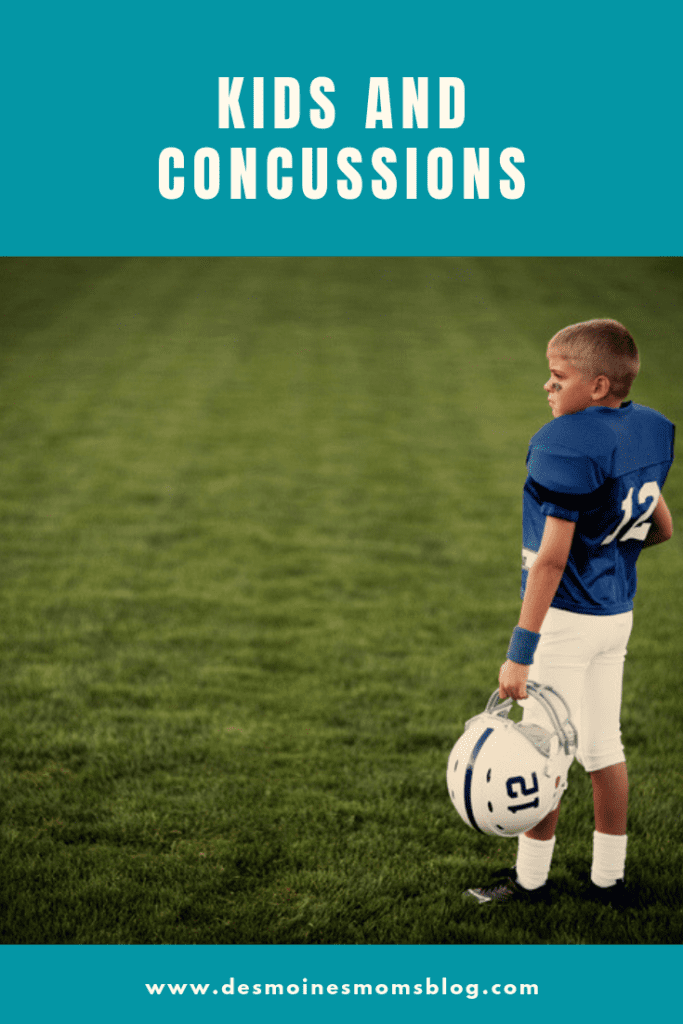 Concussions are scary. We often hear about them in relation to collegiate and professional sports, but mild traumatic brain injuries impact all age groups.
Concussions are scary. We often hear about them in relation to collegiate and professional sports, but mild traumatic brain injuries impact all age groups.
The Centers for Disease Control and Prevention (CDC) has a set of guidelines to help protect kids. The concussion protocols for youth cover diagnosis, prognosis, and treatment of the injury.
Shawn Spooner, MD, a sports medicine expert for UnityPoint Clinic, explains the guidelines and helps identify what parents need to know to find the most personalized care for their families.
Concussion Information for Parents
According to the CDC, concussions can result from a bump, blow or jolt to the head. This impact can cause the head and brain to move quickly back and forth and can cause the brain to bounce or twist in the skull resulting in chemical changes in the brain and sometimes damage to the brain cells.
How long does a concussion last?
Most kids with a concussion feel better within a couple of weeks. Some symptoms may appear right away, while others may be a bit delayed. Your child might not realize they have concussion symptoms until they try their normal, everyday activities.
Signs of a possible concussion
- Physical symptoms. This includes irritation to light, dizziness or balance issues, headaches, nausea or vomiting, and vision problems.
- Cognitive symptoms. The child might have problems concentrating, feel foggy, or notice difficulty with short- or long-term memory.
- Social/emotional symptoms. These symptoms may include anxiety, irritability, feeling more emotional, and/or sadness.
- Changing sleep patterns. The child might sleep less, sleep more, or have trouble falling asleep.
While these signs of a concussion are all normal bodily responses, if you see something that concerns you or something gets worse, contact your doctor immediately.
“Parents may choose to inquire about the experience of their child’s provider in terms of concussion care, especially in cases where symptoms are persistent or complex. Also, parents have an important role in many of the recommendations. Everything from avoiding unnecessary advanced imaging (CT, MRI) to ensuring the proper multidisciplinary approach to treatment should be a focus for a parent of a child recovering from a concussion,” Dr. Spooner says.
New Concussion Protocol for Youth
Dr. Spooner says the CDC’s move to publish specific pediatric concussion guidelines is good. It gives the public and medical providers the tools to correctly identify and manage concussions in youth 18 and under, which is a population that isn’t often the focus.
The CDC guidelines refer to mTBI, which stands for mild traumatic brain injury. Dr. Spooner says mild traumatic brain injury is a phrase that’s more technically accurate than a concussion. However, in general, mTBI and concussion can be used interchangeably.
Understanding the Concussion Guidelines
The CDC recommends 19 specific guidelines. We know, that’s a lot! So, Dr. Spooner identifies the points he finds most important for how to treat a concussion.
- Use validated tools for diagnosis and screening. The CDC guidelines suggest health care providers should not routinely use a head CT (CAT scan) for diagnostic purposes. Instead, it’s best to use validated tools for concussion diagnosis and screening. Dr. Spooner says there’s been a lot of recent hype regarding serum markers and saliva testing, but he says these types of tests are still in the research stage, and the CDC guidelines say they shouldn’t be widely used.
- Understand comorbidities. Comorbidity is a fancy word for being able to identify if a child has another condition or disease that might impact how he/she heals from a concussion.
- Practice “relative rest.” The CDC guidelines support the return to appropriate levels of activity after just a few days of rest (2-3 days), which leads to earlier recovery and better outcomes. This includes beginning light activity and gradually re-introducing regular activities (not including sports).
- Importance of education and the coordination of care between the patient, family, care team, school staff and anyone else involved in the care process.
- Best practices for concussion symptom treatment. The guidelines pinpoint the best treatment for symptoms such as headaches, blurriness and dizziness. The guidelines also point out techniques for sleep management, cognitive rehabilitation and emotional support management. Generally, rest and careful use of acetaminophen and ibuprofen or similar over-the-counter pain medications are helpful to treat headaches. Also helpful is avoiding headache triggers such as vigorous exercise or cognitive activity, bright lights, electronics, etc.
Putting Concussion Guidelines into Practice
Dr. Spooner says these guidelines are an important step in encouraging a more standard approach to the care of concussions. And that approach to care should lead to better outcomes.
 Dr. Shawn Spooner is board-certified in Sports Medicine and Family Medicine. Learn more about Sports Medicine services at UnityPoint Clinic.
Dr. Shawn Spooner is board-certified in Sports Medicine and Family Medicine. Learn more about Sports Medicine services at UnityPoint Clinic.
Connect with UnityPoint Health Des Moines
This post is part of a series of sponsored posts by UnityPoint Health Des Moines.

















